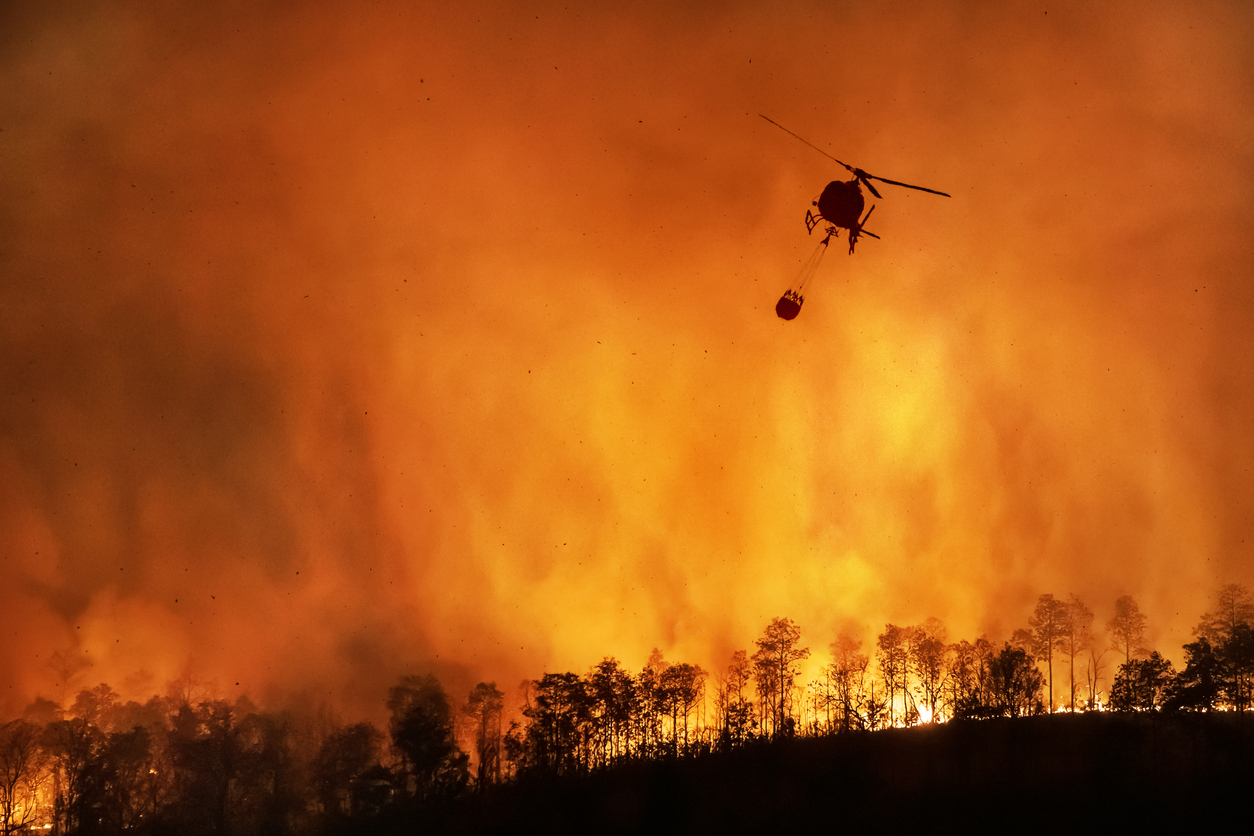RMS insured losses represent estimates from major wildfires in California, Oregon, Washington, and Colorado at December 1, 2020:
Region Insured Losses (USD $ bn) as of 1 December, 2020
- Northern California 5.0 - 9.0
- Oregon and Washington1.0 - 3.0
- Colorado Up to 1.0
The RMS estimate includes losses from property damage, including evacuation and smoke damage, business interruption (BI), and additional living expenses (ALE) across residential, commercial, and industrial lines. Smoke and evacuation are expected to be significant contributors to losses for the wildfires this season, contributing about 20 percent of losses in California and Colorado and about 35 percent in Oregon and Washington. The estimate also accounts for notable post-event loss amplification (PLA) from property damage (25 to 30 percent) and business interruption/ALE (up to 100 percent or greater).
The RMS loss estimate is based on detailed modeling of fire spread, ember accumulations, and smoke dispersion of the fires utilizing the U.S. Wildfire High-Definition (HD) Model, part of the North America Wildfire HD Model suite, released in February, 2019. The model covers the entire contiguous U.S. and explicitly simulates ember and smoke to support detailed analysis of the impact of a wildfire beyond historical fire perimeters. The model’s findings were supported by Damage Inspection Specialist (DINS) damage surveys for California Fires, published damage reports from federal and respective state agencies for the Oregon, Washington, and Colorado fires, and the RMS U.S. Wildfire Industry Exposure Database.
Michael Young, Vice President, Product Management said: “2020 represents the most destructive fire season on record, in terms of burn area in California. Since August, 69 major fires that exceeded 1,000 burned acres each, have burned so far. Five of the six largest ever California wildfires have occurred in 2020, with over 4.4 million acres burned in total to date. While fires earlier in the season were dominated by ignitions sparked by the intense lightning storm in August, extreme wind-driven fires dominated the last few months. A similar phenomenon resulted in record-breaking fires in Oregon as well this season, with over 20 major fires driven by extreme winds, burning more than 1.2 million acres so far. In October, Colorado experienced its three largest destructive fires with more than 24 major fires burning 850,000 acres in total.
Rajkiran Vojjala, Vice President, Model Development said: “This wildfire season reaffirms the growing catastrophic nature of this peril. Wildfire risk is clearly evolving, not only in California, but also in other states, as we observed in Oregon and Colorado. While changing climate patterns have significantly influenced the record-breaking fires this season, several other factors also profoundly affected the ignition potential and expected losses from these events in different ways. Most notable amongst them are the Public Safety Power Shutoff (PSPS) measures undertaken by utilities, preparedness and response of firefighters in Northern California despite COVID-19 challenges, and recent legislative actions governing wildfire claims settlement such as the California Senate Bill 872. RMS is currently engaged with various stakeholders in evaluating these factors and understanding their impact on the emerging risk profile of this peril as part of its wildfire modeling agenda.”













